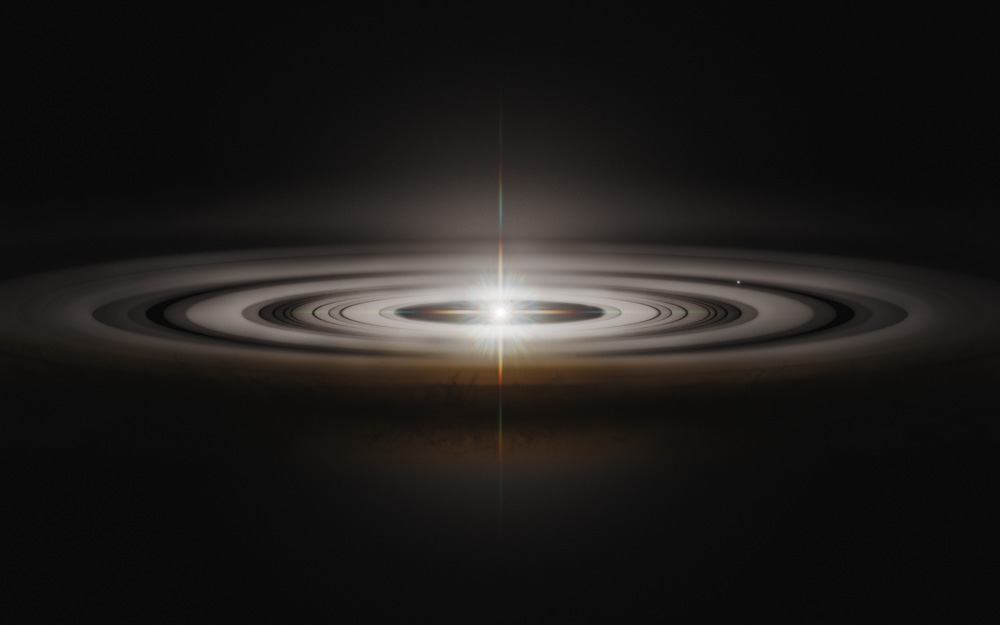
Protoplanetary Disk (2017)
There is a long list of space illustrations which bother me for a variety of reasons, and images of protoplanetary disks are a big offender. While I’m not entirely pleased with my own rendition and may try again at a later point, several key issues are addressed:
1. The star is a point source. You will never see anything but a point source at the scale of planetary disks.
2. Just as you will never see the star as anything but a point, you will also never see any planets. At most, if you were looking in the infrared, you would see another point source many orders of magnitude dimmer than the parent star. It would have its own PSF (point spread function) and that’s it. Maybe I could put a dim point source in one of those empty lanes. It’s possible. I’ll think about it.
3. Because there are no visibly large planets, there are no shadows being cast by them. Even if you were next to a planet, you probably wouldn’t see any shadows because “god ray” style shadows depicted in sci-fi movies and art require very specific conditions to occur and probably never happen in space quite like that. Larger scale shadows, sure. We have even seen those recently, but that shadow is cast by perturbations of Earth-orbit-sized structures of the disk itself, not some puny little planet.
Anyway, here are some further thoughts running through my head when illustrating this:
Looking at ALMA and Hubble imagery of real planetary disks, I find them to be astonishingly regular. There are some leftover bumps and blips in Hubble’s images, but that’s from the star’s PSF, not necessarily part of the disk itself. So I assume they are very, very circular and smooth. Something like Saturn’s rings.
Understanding basic orbital mechanics and also from studying larger scale disk objects, I guess that they are fluffier as distance from the star increases. I tried to show that. I put some texture in the diffuse foreground ridge and made sure the dust significantly reddened the light passing through it. It might still be too dense at this point, which I imagine to be around 120 AU from the star.
I also imagined an extremely tenuous spherical orb of dust which is denser near the star and virtually nonexistent farther out. You can see it peeking out from under the foreground dust ring. The idea here is that even though this disk is regular now, in the past it had a tumultuous beginning before the angular momentum of the matter swirling around the star settled into its average position like this. Over millions of years this and all dust is dragged into the star, but before that happens, maybe a little is leftover to slowly spiral inward. Just an idea. Possibly totally wrong.
I used Hubble’s PSF for the star. I’m a fan. So what. If you noticed that before reading this, then count yourself as either very experienced with Hubble or very perceptive. The PSF was modeled with Tiny Tim.


